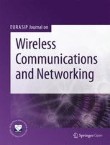Ultra-reliable and low-latency communications (URLLC) are one of the new application scenarios in the fifth generation (5G) communication systems, and will be the key enabler for mission-critical Internet-of-Things, autonomous vehicles, and virtual/augmented reality (VR/AR) etc. According to the requirement from 3GPP, the end-to-end (E2E) delay should be around 1 millisecond and the E2E reliability in terms of packet loss probability should be less than 10-5. Although it is possible to achieve 1 millisecond transmission delay in the coming 5G New Radio, the randomness in wireless networks will result in serious network congestions. Thus, current 5G technologies cannot meet the requirements on ultra-low E2E delay with ultra-high E2E reliability, and achieving URLLC remains a challenging task in the sixth generation (6G) communication systems.
In the existing paradigm, it is challenging to satisfy the QoS requirements of URLLC due to the following reasons: First, by dividing network communications into seven layers according to the Open Systems Interconnection model, it is possible to derive optimal solutions in each layer. However, these solutions are strictly suboptimal for the E2E optimization. Second, theoretical analysis is mainly based on simplified models and assumptions. Since models are not exactly the same as real-world networks, it is difficult to predict or evaluate the QoS achieved by a policy. Third, with optimization algorithms, a network needs to search optimal solutions for resource management according to dynamic wireless channel and traffic loads. This will bring high computing delay, which cannot achieve the requirements of URLLC. To address these challenges, novel methodologies and enable technologies are in urgent need in 6G systems. For example, since the E2E performance depends on the technologies in different layers, cross-layer design is inevitable for optimizing the whole system. The performance limits and the solutions to approach these limits can be obtained by sophisticated cross-layer design. To further implemented these solutions into practical systems, model-free machine learning methods showed great potential.
The aim of this special session is to share and discuss how to support emerging vertical industry applications by developing novel methodologies and enable technologies for URLLC in 6G systems, and to bring academic and industrial societies together to address technical issues from both theoretical and practical aspects.
Potential topics include but are not limited to:
- Physical-, link-, and network-layer technologies for URLLC
- Performance analysis for emerging applications in URLLC
- Cross-layer optimization for URLLC
- Prediction and communication co-design for URLLC
- Space-air-ground integrated networks for URLLC
- Deep learning for radio resource management in URLLC
- Unsupervised deep learning for constraint optimization in URLLC
- Deep reinforcement learning for network slicing in URLLC
- Edge intelligence for URLLC
- Prototype and test-bed for URLLC
Deadline for submissions:
31st August 2020
Lead Guest Editor:
Changyang She, The University of Sydney, Sydney
Guest Editors:
- Zhongyuan Zhao, Beijing University of Posts and Telecommunications, China
- Zhiguo Ding, The University of Manchester, UK
- Tony Q. S. Quek, Singapore University of Technology and Design, Singapore
